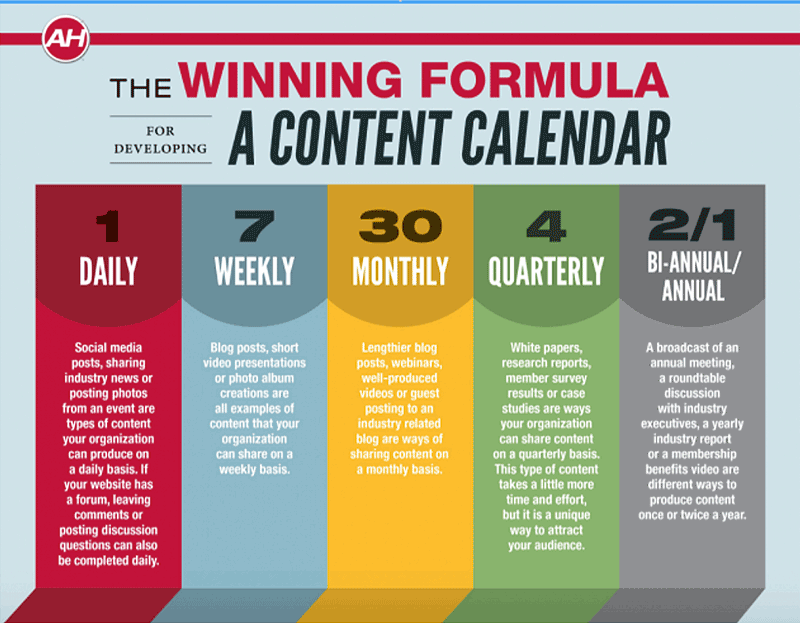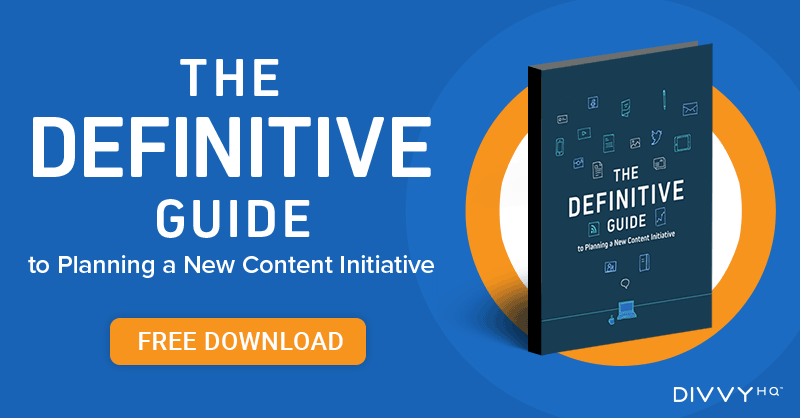Content marketing generates a better return on investment than pay-per-click ads, delivering three times the number of leads. However, making it work to your advantage requires a savvy content strategy and an efficient creation process.
If you are publishing buckets of content on multiple platforms, how do you ensure a process that works? Well, you need to define it, implement it consistently, measure the results, and pivot as needed.
We know you already have a lot on your plate; you don’t have time to build (from scratch) and test a content creation process to see if it works. Divvy’s got you covered, so let’s dig in. Here’s what an effective method looks like.
Questions To Consider Before You Establish a Content Creation Process
While you can just go ahead and create a workflow from established steps, you can create a more effective process if you consider how to tailor it to your company. Consider the following questions:
- How will your content contribute to fulfilling company and marketing goals?
- Which audiences are you creating content for?
- Which channels do you use for content marketing?
- Who contributes to your content marketing process?
- How successful have your marketing efforts been recently?
- How can you ensure everyone is on the same page?
Answering these questions beforehand gives you a focus for developing your process, allowing you to employ it consistently across your teams and channels or adapt it to meet specific needs.
Steps To Include in Your Content Creation Process
We recommend establishing and documenting a standard process and including it in your content strategy. Divvy’s platform provides a home for your plans, giving access to everyone who needs it. You can also bake your strategy and process into your Divvy content calendar.
Include these seven steps in the content production process.
1. Ideation & Planning
Content planning is a critical component of the process. Planning helps you choose topics with a clear purpose and add value for your audience.
During this first step, your team will brainstorm to generate ideas for content subject matter and develop a list of possibilities. Once you determine the topics you want to cover during a particular planning cycle, you can set aside others for potential use later.
Divvy’s platform removes the barriers to effective collaboration and brainstorming. Your team does not need to meet in person to work together.
We have the tools they need to collaborate within the system, simplifying the content creation process. You also won’t need to worry about where to store content ideas you don’t use immediately: We provide a visible and readily accessible place to park them.
2. Choose Your Formats and Channels
Once you decide on your topics, you need to determine which formats work best for your chosen subjects. Use as many formats as possible, including:
- Blogs
- Videos
- Live streaming
- GIFs
- Infographics
- Photos
It’s essential to plan a mix of content formats.
Source: Hubspot
As you choose your formats, determine which channels you want to publish on. Selecting formats and channels go hand in hand, as you’ll want to balance different content types for each channel and set format parameters based on platform preferences and constraints.
Divvy’s content calendar makes seeing your content and format distribution across channels easy. With nearly endless filtering capabilities and color coding, your team can quickly determine format gaps and saturation.
3. Schedule and Assign
The next step in the content creation process is to put the content on the calendar and assign your creatives. The publishing schedule should dictate the deadlines for preparing the asset for publication.

Source: Association Headquarters
At this stage, you can improve your production efficiency using Divvy’s platform. Our software lets you create unique content workflows, which automates task assignments and notifications, allowing you to streamline your team’s production cycle.
4. Research the Topic
When you assign creatives to an asset, you should also deliver a content brief that provides the information they need to create killer content your audiences will devour. The brief should include details about the audience, topic, keyword, and other relevant information to help them complete their tasks efficiently.
If you use our platform, your team will have access to the content brief within the system, making it easy to quickly reference it before and during the research process.
5. Craft and Edit
With the prep work in the rearview mirror, your creatives can get down to the business of doing what they do best. However, no matter how talented your team is, your content creation process will be more effective if you implement style guides.
Our software has a content interface that allows your team to create and edit inside the system. You can include your style guide within the editor to ensure writers, editors, and designers can access it.
When you use Divvy’s system, everyone has instantaneous access to the most recent version of an asset. Additionally, when a team member completes a task, they mark it as finished, triggering a notification within the system that lets everyone know where the asset is in the production process.
6. Review, Approve, and Publish
Before you send your content out into the world, you need to make sure it’s ready to roll. This final stage of the content creation process includes proofreading and reviewing the finished product.
You don’t want to discover that the piece had errors or wasn’t in polished form after you hit “publish.” If it still needs work, you can inform the appropriate team member through Divvy’s multiple communication and notification tools, making sure the individual gets the message quickly.
After an asset gets the green light, your team can publish it to the appropriate channel.
7. Analyze Performance
To maintain an effective production process, analyze content performance and conduct regular content audits. Our software simplifies analytics and reporting, generating easy-understand reports you can share with your team or pass on to the C-suite. We also have a content audit template that eases the burdens of an audit.
Tools To Optimize Your Content Creation Process
We know how hard it is for large content operations to rock the content creation process consistently. Our platform gives you the tools to optimize production, housing everything you need in one central hub. We’re all about simplicity, so our software allows over 1,000 integrations. Request a demo to see what a streamlined creation process looks like!

